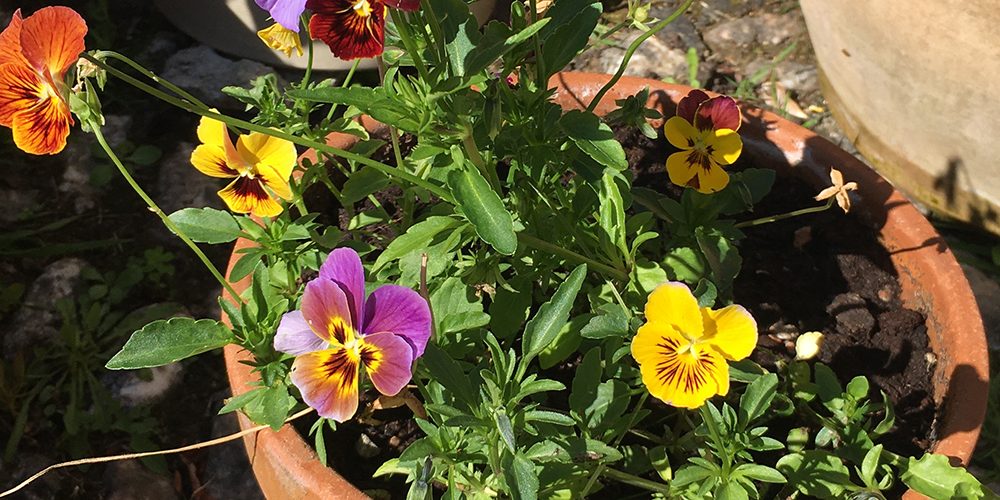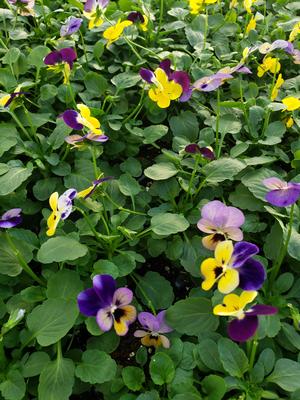Violas And Vegetables: The Perfect Pair
Violas and Vegetables: The Perfect Pair
Violas and vegetables are a match made in heaven. These two plants complement each other in so many ways, both visually and functionally. Violas add a splash of color and interest to vegetable gardens, while vegetables provide violas with the nutrients they need to thrive.
In this blog post, we will explore the many benefits of planting violas and vegetables together. We will also discuss how to choose the right violas for your vegetable garden and how to care for them.
Why Violas and Vegetables Make the Perfect Pair
There are many reasons why violas and vegetables make the perfect pair. Here are just a few:
- Violas add color and interest to vegetable gardens. Violas come in a wide variety of colors, from bright blues and purples to soft pinks and yellows. This means that you can find violas that will complement the colors of your vegetables, or that will create a striking contrast.
- Violas attract pollinators. Violas are a favorite flower of bees, butterflies, and other pollinators. This is good news for vegetable gardeners, because pollinators help to pollinate vegetable plants, which leads to a better harvest.
- Violas help to suppress weeds. Violas have a shallow root system, which means that they don't compete with vegetable plants for water and nutrients. This can help to suppress weeds, which can be a major problem in vegetable gardens.
- Violas are easy to care for. Violas are relatively low-maintenance plants. They are drought-tolerant and can withstand a variety of weather conditions. This makes them a good choice for busy gardeners who don't have a lot of time to spend tending to their garden.
How to Choose the Right Violas for Your Vegetable Garden
When choosing violas for your vegetable garden, there are a few things to keep in mind:
- Consider the color scheme of your vegetable garden. You want to choose violas that will complement the colors of your vegetables. If you have a lot of bright colors in your garden, you might want to choose violas in softer shades.
- Think about the size of your vegetable garden. If you have a small vegetable garden, you'll want to choose smaller violas. This will help to prevent them from overwhelming the vegetables.
- Consider the climate in your area. Some violas are more cold-tolerant than others. If you live in a cold climate, you'll want to choose violas that can withstand the winter weather.
How to Care for Violas in Your Vegetable Garden
Violas are relatively easy to care for. Here are a few tips:
- Plant violas in full sun or partial shade.
- Water violas regularly, especially during hot weather.
- Fertilize violas with a balanced fertilizer every few weeks.
- Deadhead spent flowers to encourage new blooms.
- Protect violas from frost in the winter.
Conclusion
Violas and vegetables make the perfect pair. These two plants complement each other in so many ways, both visually and functionally. Violas add a splash of color and interest to vegetable gardens, while vegetables provide violas with the nutrients they need to thrive.
If you're looking for a way to add some beauty and functionality to your vegetable garden, consider planting violas. You won't be disappointed.
Viola companion vegetables are a great way to add beauty and productivity to your garden. These flowers attract beneficial insects, deter pests, and improve the overall health of your vegetables.
Some of the best viola companion vegetables include:
- Chives: Chives help to repel pests like aphids and cabbage moths. They also add a delicious flavor to salads and cooked dishes.
- Lettuce: Lettuce and violas are both cool-season crops that can be planted together. They help to shade each other from the sun, which can help to prevent wilting.
- Carrots: Carrots and violas both benefit from the presence of each other. Carrots help to deter the carrot fly, while violas help to attract pollinators.
- Peas: Peas and violas are both nitrogen-fixing plants, which means that they can help to improve the soil quality in your garden.
If you're looking for more information about viola companion vegetables, I recommend visiting Gardenia Inspiration. This website has a comprehensive list of viola companion vegetables, as well as tips on how to plant and care for them.
FAQ of viola companion vegetables
Q1. What are viola companion vegetables?
A. Viola companion vegetables are plants that can be grown together with violas to benefit each other. Some of the most common viola companion vegetables include:
- Lettuce: Lettuce attracts pollinators, which help to pollinate violas.
- Carrots: Carrots help to repel pests, such as carrot flies, which can damage violas.
- Beans: Beans fix nitrogen in the soil, which can benefit violas.
- Cucumbers: Cucumbers help to shade the soil around violas, which can help to keep the soil moist.
- Spinach: Spinach helps to suppress weeds, which can compete with violas for water and nutrients.
Q2. What are the benefits of planting viola companion vegetables?
A. There are several benefits to planting viola companion vegetables. First, companion plants can help to attract pollinators, which can help to pollinate violas and improve their flowering. Second, companion plants can help to repel pests, which can damage violas. Third, companion plants can help to improve the soil quality, which can benefit violas.
Q3. What are some tips for planting viola companion vegetables?
A. Here are some tips for planting viola companion vegetables:
- Choose companion plants that have similar growing requirements.
- Plant companion plants in close proximity to each other.
- Water companion plants regularly.
- Fertilize companion plants as needed.
Q4. What are some common problems that can occur when planting viola companion vegetables?
A. Some common problems that can occur when planting viola companion vegetables include:
- Pests: Some pests, such as aphids and slugs, can damage both violas and their companion plants.
- Diseases: Some diseases, such as powdery mildew and blackspot, can affect both violas and their companion plants.
- Poor soil quality: Poor soil quality can stunt the growth of both violas and their companion plants.
Q5. How can I troubleshoot problems with my viola companion vegetables?
A. If you are experiencing problems with your viola companion vegetables, here are some tips for troubleshooting:
- Identify the problem: The first step is to identify the problem. Are pests or diseases affecting your plants? Is the soil quality poor? Once you have identified the problem, you can take steps to address it.
- Take action: Once you have identified the problem, you can take steps to address it. For example, if pests are affecting your plants, you can use insecticidal soap or neem oil to control them. If diseases are affecting your plants, you can remove infected leaves and stems and treat the plants with a fungicide. If the soil quality is poor, you can amend the soil with compost or other organic matter.
Image of viola companion vegetables
5 different images of "viola companion vegetables" from Pinterest:
- Image 1: A bed of violas with carrots, lettuce, and marigolds.

- Image 2: A pot of violas with tomatoes, basil, and chives.

- Image 3: A row of violas with cucumbers, beans, and nasturtiums.

- Image 4: A border of violas with peas, onions, and garlic.

- Image 5: A bouquet of violas with dill, mint, and oregano.

These are just a few examples of companion plants that can be grown with violas. Violas are generally compatible with most vegetables, but some good pairings include:
- Carrots: The strong scent of carrots can help to deter pests from violas.
- Lettuce: Lettuce and violas both prefer cool, moist soil, so they make good companion plants.
- Marigolds: Marigolds help to repel pests, such as nematodes and aphids, from violas.
- Tomatoes: Tomatoes and violas both benefit from the shade of each other, and they can help to attract pollinators.
- Basil: Basil helps to deter pests from violas, and it can also improve the flavor of the violas' flowers.
Post a Comment for "Violas And Vegetables: The Perfect Pair"